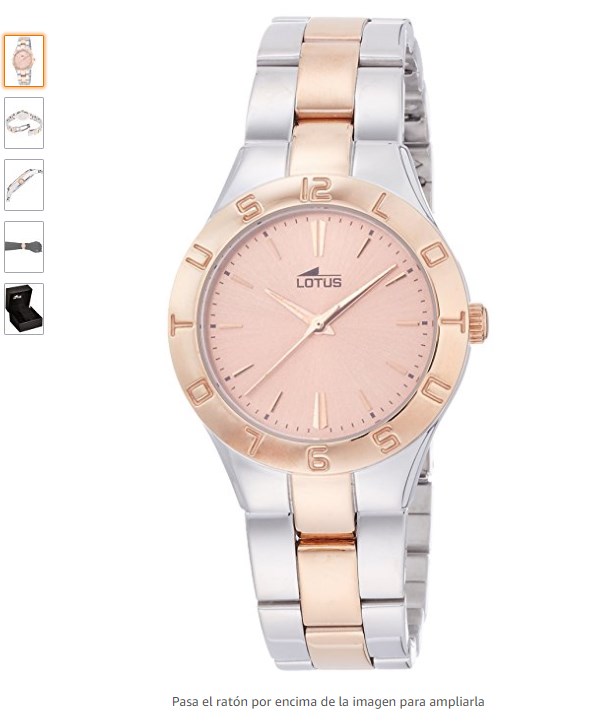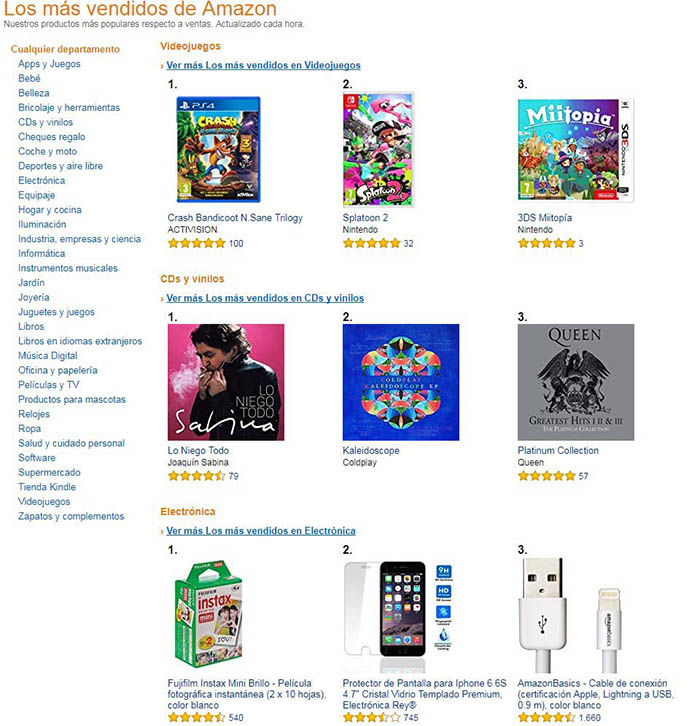Search Engine Optimisation. Never has a word been so often repeated by digital marketing experts to the point of becoming a mantra. In case you are not familiar with the term, by SEO we mean all those techniques and strategies that aim to make a service or product appear in the top positions of search engine results (excluding paid actions).
SEO is usually associated with content search engines on the Internet, such as Google, but it is really applicable to any website that has a search engine. Obviously, the more content the site has and the more advanced the search engine algorithm is, the more complex and specialised the actions needed to improve SEO are.
We are not going to explain how to develop a good SEO plan for Google, as this is not our speciality, but we are going to advise you on how to plan the positioning of a product for a marketplace where SEO is not always taken into account as much as it should be: Amazon.
Why SEO on Amazon?

Because the user’s search intention is not the same as in Google.
Let’s develop this idea: when a person has a need, he or she seeks to satisfy it and, to do so, tries to find out in the best way possible which products or services would satisfy it adequately. This is what is known as informational search.
Once the consumer knows what product he/she needs, he/she moves on to the purchase phase. That is, he or she searches for the product he or she has chosen in order to purchase it. This is called transactional search.
If Google is the king of informational searches, Amazon is the king of transactional searches.
In fact, it is estimated that 75% of users start their product search directly on Amazon.
And therefore, where there is a large volume of searches, there is also an algorithm that manages them, which means that the products searched for are also optimisable for this search. It is now clear to you how important it can be to work on SEO on Amazon.
But then, what should you look for when optimising your products?
We can divide it into relevance factors and performance factors.
Relevant factors
These factors affect how the product is displayed on Amazon. They are the ones that carry the most weight when doing an SEO analysis of an item.
Key words
We must find the right keywords so that the Amazon crawler can optimally match product and search.
To do this, we will carry out a keyword research taking into account that the keywords to be used in an ecommerce are not the same as those that can work in Google.
The steps to be taken are as follows:
Determine what kind of search terms customers would use to reach our product. Choose those words that are more specific, avoiding those that are too often used by sellers. Take very much into account the longtail words, which, although they occupy a lower position in the ranking, are easier to position. Include words with at least fifty monthly searches, although ideally they should have around a thousand. Once we have our list of keywords, analyse them with some of the many Amazon keyword tools available such as Sonar (http://sonar-tool.com/us/) or keyword tool (http://keywordtool.io/amazon). On the other hand, we must also take into account Amazon’s own autosuggest, which offers us a wide list of suggestions about the searches that customers perform in the search engine itself.
Optimisation of each product
The title
It is the most relevant factor for search results: all the keywords that we add to the title will be weighed when it comes to displaying the result in a search.
It is best to create a title that is approximately 80 to 120 characters long, which will be enough to enter all the keywords we need.
In terms of the structure it should have, the recommended thing to do is:
Start with the brand and model of the product, along with the number of articles and a few descriptive keywords. Add a reason (Unique Selling Proposition) why the customer should buy that product and not another from the competition. When writing it, it is advisable to appeal to the customer’s emotional side, using the AIDA (attention, interest, desire, action) method.
The attributes

They are the second most important element after the title and the right place to include all those words that could not be included in the title.
It is important not to include keywords that were previously used in the title and try to convince the customer with reasons that this is the right product for him. To do this we must find the right balance between those words that we want to position and the information that really interests the customer.
The description
Many authors argue that this field is not important enough for the user and it is not necessary to pay attention to it, but my recommendation is not to overlook it. Keep in mind that the description is content and is therefore indexed by Amazon and even Google itself.
This is a good place to re-include the keywords previously used in the title, as well as other descriptive characteristics of the product.
Amazon meta keywords
These keywords do not appear in the information that the user receives but they will be evaluated by the Amazon search engine, so they are relevant for the organic positioning of each article.
Amazon offers us 5 lines to enter this type of keywords. We should choose keywords that do not describe the product but that can be included in the user’s search objective.
The images

Undoubtedly, and this is valid for any image on any website, photos must be of good quality. In fact, on Amazon, products that offer a quality image have a higher conversion rate.
Apart from these notes that obey common sense, you should also take into account the guidelines that Amazon itself imposes when uploading photos for products. They may seem restrictive or excessively detailed, but bear in mind that they are the result of years of experience in sales and conversion maximisation.
Performance factors
Aunque una buena presencia del producto es importante, no es suficiente. Para Amazon también es relevante cuál es el rendimiento de un artículo. Ten en cuenta que ellos obtienen beneficio de cada venta realizada por ello les interesa que las primeras posiciones las ocupen aquellos productos que se venden más.
The product category
The categories in Amazon work as a sales niche in which the product you want to sell is established and it is also used to classify the articles in a way that is convenient for the potential customer to carry out the search.
Both the categories and their possible subcategories are very much taken into account when positioning a product, so their assignment is something that we must study carefully.
In fact, on many occasions we will find that the same product can be placed in different categories, but we must choose carefully which is the one we are interested in:
Choose the one in which you can be in the top positions in a short period of time. Competitors with low ratings will make things easier for you. In addition, if your articles are not well optimised, the competition will be less fierce.
Amazon sales ranking

The Amazon Best Seller Rank not only ranks the best-selling products on Amazon, it also shows how well a product sells compared to other products in the same category. Obviously, the higher the sales ranking of a product, the more visible it is in Amazon searches.
The product with a sales ranking of 1 is the best seller in the category. This helps the seller to determine how well his product is selling in comparison to other items of the same status.
On the other hand, it should be noted that only products of the same main category are taken into account for the calculation of this ranking.
For this calculation, the sum of all sales of a product is taken into account, evaluated according to the age of the sales and compared with the figures of the other products in the same category, sorted from most to least sales.
How to improve your sales ranking on Amazon?
Simple: generate more sales than your competitors.
How do we achieve this? Obviously with all the SEO improvement we discussed above, but there are also other ways to help you increase sales.
One of them is proper price management. To do this, it is necessary to carry out an analysis of the competition, both within the marketplace itself and outside, which will help us to discover our position in the market. Once the initial position has been determined, it is time to start automatic pricing according to the expected profit margin and try to improve sales significantly.
The question is, does the price of the product influence SEO on Amazon? We can affirm that it is not a main factor, but indirectly it has its weight. A product that attracts the consumer because of its price will increase the number of sales, rising in the ranking and, therefore, improving its organic positioning.
Vendor performance
When we talk about seller performance, we refer to the quality of the seller, understood as the relationship and communication with buyers.
This performance is reflected in Amazon Seller Central, where different ratios that indicate the seller’s performance are reflected:
- Ratio of orders with problems: this shows the feedback from customers. The ratio should be less than 1%.
- Ratio of cancelled orders: the percentage should be less than 2.5% in the last month. Ratio of orders shipped late: less than 4%.
- On-time delivery rate: 97% of orders must be delivered on time and 98% must have a tracking number.
- Customer response time: less than 24 hours in 90% of cases.
Amazon attaches particular importance to customer satisfaction, as this has a direct impact on sales, which in turn has a direct impact on visibility in search results.
Customer reviews

The star ratings of all Amazon products have a direct influence on the buyer: 93% of users read at least one review from previous customers before buying a product online, and Amazon products with positive reviews experience an increase in sales of up to 30%.
For a product to increase its sales potential, it needs at least 50 reviews, although depending on the category and competition, this figure can increase significantly.
Although the number of ratings does not directly affect the ranking, it does indirectly contribute to sales and therefore to organic positioning.
On the other hand, what happens with negative reviews?
Executing a perfect sales process is vital for customers to give us positive feedback. Even so, it is inevitable that sometimes things do not go as expected due to multiple factors such as the logistics company, the product manufacturer or the human factor involved in the sales process.
Because of this, there is always a percentage of failures that will result in negative ratings. For Amazon, a rating of 3 stars or less is bad.
Before this type of rating you should always try to answer them in the shortest possible time and in an appropriate and cordial way, offering an appropriate and agile solution to solve the problem and change the buyer’s opinion.
If a review is considered unfair, it is possible to resort to Amazon arbitration to review it and, if appropriate, eliminate it.
Conclusion
Amazon is currently the world’s leading sales platform. Because of this, its search engine is one of the most popular places for consumers to shop online. This makes it very important to develop a good SEO work on Amazon and a good strategy will help our products to be placed among the first positions of the search results.









